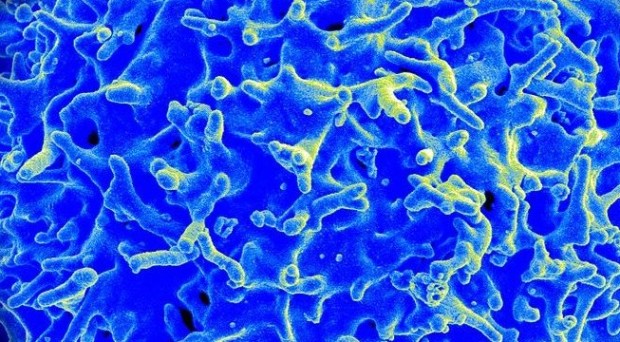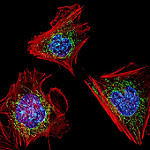
One cell is never the same as another–even within the same organism or within a particular tissue or culture. A daughter cell is even unique from its parent cell. Each cell has its own repertoire of expressed genes and proteins, and only with the development of powerful single-cell technologies have we been able to probe more deeply into how cells are similar or different to one another.
The field of single-cell research is rapidly evolving and it seems as if each week there is a new interesting study published in a high-impact journal looking at heterogeneity between cells in various systems. Last month in Science, Hanchate et. al. looked at single neurons using single-cell RNA sequencing (scRNA-seq) in mice to identify developmental mechanisms that could shape the sense of smell.
Mice have around 1000 odorant receptor genes (Olfrs), and it has long been speculated that each neuron would have only one active allele. The single-cell approach used in this study finally allowed researchers to show that this is, indeed, the case.
Mice have around 1000 odorant receptor genes (Olfrs), and it has long been speculated that each neuron would have only one active allele. The single-cell approach used in this study finally allowed researchers to show that this is, indeed, the case. The paper goes even further to show how this selection of a single allele occurs in the early stages of development.
Christopher Walsh’s group uses single-cell sequencing to identify single-nucleotide variants (SNVs) in the human brain. They performed scRNA-seq on 36 different neurons and identified thousands of somatic SNVs. The somatic mutations found were used to create lineage trees of neuronal development.
Embryonic stem cell (ESC) cultures are also a hot area for single-cell studies, and another recent publication from Sarah Teichmann’s lab highlights the effects of cell culture conditions on pluripotency and gene expression, using single-cell analysis. They culture mouse ESCs in three different conditions to show that the transcriptomes are distinct, particularly relating to expression of pluripotency genes.
The challenges of adapting methods for single-cell analysis

Methods that could previously be used only for large numbers of cells are being scaled down to the single-cell level. Last week in Nature, Keji Zhao’s group took DNase sequencing (DNase-seq) to the single-cell level.
Normally, DNase-seq requires millions of cells to detect DNaseI hypersensitive sites (DHSs), which provide information about the structure of chromatin and the presence of transcription factors.
The new method, scDNase-seq, is so sensitive that it can detect DHSs in a single cell. The authors use their method on samples taken from a patient with thyroid cancer to detect tumor-specific DHSs, and find a specific mutation that likely led to the disease.
Another paper recently published in Nature Biotechnology by Rotem et. al. similarly looks at chromatin states in single cells, but uses single-cell ChIP-seq. This is the first method to scale down the analysis of chromatin states to uncover the extent of cell-to-cell heterogeneity in a population.
The authors sample thousands of single cells and are able to identify subpopulations of cells with specific chromatin or epigenetic signatures, which could not have been determined based solely on single-cell transcriptomic analysis.
The developments in single-cell omics technologies have necessitated the creation of new bioinformatics methods to analyze the data. The single-cell field certainly has its struggles in data analysis, relating to technical and biological variability, normalization methods, batch effects, and noise.
Publications such as the recent paper in Nature Communications on characterizing the noise structure of single-cell RNA-seq experiments and the recently published article in Genome Biology on the creation of a statistical framework for characterizing heterogeneity and assessing transcriptional changes in single cells aim to improve and refine single-cell analyses so that they are more accurate and can be more widely used.
Submit your outstanding research or method to Genome Biology
Single-cell research is opening the doors to uncovering new cell lineages, learning about heterogeneity between cells, and developing new clinical treatments for cancer and other diseases. Genome Biology is highlighting this exciting field with our upcoming Special Issue on Single-Cell Omics, to be published in early 2016. The submission deadline is 31 December!
Barbara Cheifet
Latest posts by Barbara Cheifet (see all)
- What can we learn from single cells? - 1st June 2016
- Scaling down to single cells - 14th December 2015
- Guidance for the open sharing of epigenome data: an author Q+A - 22nd July 2015
Comments